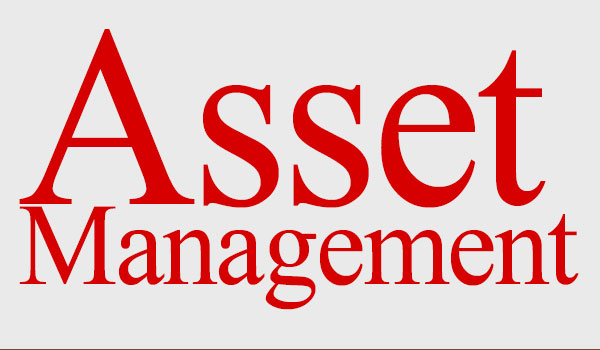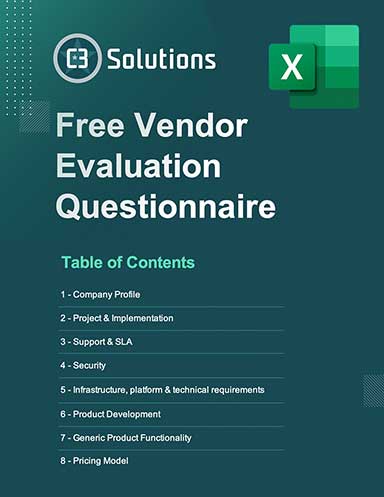6 Secrets to Asset Management
Today’s asset management solutions do far more than tell you what you have and where it’s located.
For years, asset management solutions tracked items in two dimensions: They told you what you had and where it was located the last time it was scanned.
Today’s asset tracking systems have evolved beyond two dimensions. They are using automatic identification technologies to understand the condition of an asset, when it was last serviced, and whether any important environmental conditions have changed that would impact performance.
“We’re seeing a convergence of technologies, including RFID, 2D bar codes, voice, GPS and sensors,” says Mike Liard, director of the RFID practice for VDC Research, a Massachusetts-based research firm. “And, we’re seeing a broader value proposition associated with asset management besides just where something is located.”
It is also one of the fastest-growing segments of the RFID market. “We are seeing new applications, use cases and ROI models, and we’re seeing them across industries,” Liard says.
Here are six examples of asset management solutions being used today.
1) Tracking Inventory Replenishment
If you’re going to manufacture in a lean environment, you want to minimize the amount of inventory stored at the line. At the same time, it’s important to maintain the flow of the parts and components when they’re needed to keep the line moving. “Manufacturers are using real-time asset tracking to prevent disruptions at the assembly line,” explains June Ruby, manufacturing principal with Motorola Solutions.
Freightliner, the leading heavy-duty truck manufacturer in North America, has implemented an RFID-based asset management solution to track inventory replenishment from storage to the factory floor in a plant in Portland, Ore.
Empty totes were returned to the warehouse in groups of 10 to 12 per tug for replenishment. The existing system of tracking the movement of totes was labor intensive and susceptible to error.
In the new system, RFID tags are attached to the tugs while a smart RFID/bar code label is attached to each tote. Meanwhile, RFID portals have been installed at two choke points that all inventory passes through to enter or leave the warehouse.
Filled totes are associated with a specific tug. The movement of material is tracked every time a tug passes through one of the two dock door portals equipped with an RFID reader. With that information, Freightliner knows the time and date that a tug passed through a dock portal and what inventory was loaded on that vehicle. “The system has increased the accuracy of the inventory being delivered to the line, eliminating disruptions to the assembly process,” says Ruby.
2) On a Mission to Track Totes
Tracking the location of reusable assets like plastic containers and pallets is essential for any company managing its own pool of returnables. “We have customers who were replacing 100% of their returnable plastic containers each year because they couldn’t track them once they left the distribution center,” says Kurt Mensch, principal product manager for RFID at Intermec.
One of those customers is Mission Foods, a leading producer of tortillas, chips, salsa and taco shells. Prior to installing an asset management solution, the company was spending $3.5 million a year to replace the plastic containers it uses to ship food from its manufacturing plant to its distribution centers.
Today, items are picked to a returnable plastic container identified by an RFID label. Once the containers are palletized, a shrink-wrapped load passes through a portal as it’s loaded onto a truck.
The system then knows what items and which containers went to a specific DC. The containers are read a second time when they are received at the DC and put into inventory.
As orders are filled for customers, the system identifies the containers that are empty and ready to ship back to the plant. The empties pass through a portal again when they arrive back at the plant to confirm which totes were returned. “Mission has seen an 80% improvement in the number of containers that have to be replaced each year by knowing what they have and where they are located,” says Mensch.
3) Managing Work-in-Process
The value from a real-time locating systems, or RTLS, is in knowing where your assets, inventory or work-in-process are located when you need them.
An auto manufacturer is taking that one step forward by using an RTLS system to ensure that all processes and tests have been successfully completed before a vehicle is delivered to a customer.
“The solution goes beyond location tracking,” says Jonathan Fulton, the product manager of location solutions for Zebra Technologies. “It also controls the processes that complete the vehicle.”
In this solution, an active RFID tag associated with the auto’s VIN is hung over the rear view mirror when it comes off the assembly line. In addition to tracking the location of the vehicle, the locating system collects information about which zones were visited, which processes were completed, the status of a process, whether the vehicle is on hold for rework or whether it is ready to be handed off to a logistics company for delivery.
“By setting up business rules, the system also understands any constraints in the facility,” says Fulton. “If a workstation is at capacity, it will direct the vehicle to temporary storage. Or, if there is available capacity at a workstation, the system will direct the delivery of the next vehicle to that area.”
4) Working with Automation
RFID technology is being used to not only identify and track assets, but also to enable other automated processes. The plastic pallets in the pool operated by iGPS, for instance, are tagged with EPC Gen II passive tags in each of the four corners of the pallets. The tags contain a unique serial number to identify that pallet. In addition, each pallet has six external bar codes with the same serial information.
iGPS uses that information to keep track of where it sends pallets. Now, some of its customers are using the RFID tags to work with automated materials handling systems. One manufacturer has installed RFID readers on its palletizing line. After manufacturing, the unit load is automatically palletized, stretch-wrapped and labeled with a license plate bar code label (LPN) that identifies the product on the pallet. The LPN is associated electronically with the RFID serial number on the pallet and written to the warehouse management system (WMS) database.
The WMS then sends an automatic guided vehicle (AGV) equipped with an RFID reader to pick up and putaway the pallet. RFID technology also directs the AGV when it receives an order to retrieve a specific pallet from the warehouse and load it onto a trailer.
“Using the RFID tags in the pallets, the plant is able to operate lights out automation from the palletizer to storage to the shipping dock,” says Jack Sparn, chief information officer for iGPS. If the system does fail, Sparn adds, an individual in the plant can scan the LPN tag with a handheld reader or key in the information to keep the plant running.
5) Add GPS to Yard Management
As the trailers in the yard become a form of mobile, temporary storage and an extension of the warehouse, yard management systems (YMS) are essential to keeping track of the location of trailers. Even manual systems can do an effective job of narrowing down where a trailer should be located in the yard, says Greg Braun, vice president of business development for C3 Solutions.
“If the drivers and yard jockeys do their job, even a manual system gives good bang for the buck,” says Braun.
The challenge comes for operations that need 100% certainty of the location of a trailer or with users who operate multiple yards in a geographic area. One way YMS providers like C3 are providing more granular locating information is to use the GPS telematics that are already installed on many trailers.
“In those instances, we can take a feed from the GPS device on the trailer when it’s dropped in the yard and tie that to a location in the YMS,” says Braun. “When it comes time to move that trailer to the dock, the shunter in the yard has a GPS display inside his vehicle that will direct him to the right location. We can leverage the existing technology because they already have it on the trailer.”
6) Toward a Smarter Tag
As RFID technology evolves, new tags are coming to market with far more memory and capabilities than the EPC Gen II tags developed for identifying cartons and pallets.
“We’re transitioning away from the enterprise notion of RFID with a dumb tag with limited information and an expensive back end system to hold data,” says Tim Butler, president and CEO of Tego. “In its place, you’re seeing the introduction of a smart tag with large amounts of memory that enables distributed computing for assets.”
The RFID tags Butler is describing feature up to 32 kilobytes of configurable memory that can manage information just like a hard drive. Information on these tags can be written, overwritten and appended. In a maintenance operation, such as a repair depot for commercial aircraft that may remain in operation for decades, years worth of maintenance history can be maintained on a single tag on a part. These tags can be combined with sensors to record information about the operating environment, such as heat, humidity and vibration, which might be important to that part.
Lastly, Butler notes the development of RFID tags and readers that allow for the social networking of assets, that is, the ability of the assets to act as part of a network. “Let’s say the humidity in one part of a plant exceeds the operating parameters in a way that will affect operations in another area of the plant or a process,” says Butler. “That information can be written to a tag. When it’s read by an RFID reader in one area of the operation, the reader can share that information with a reader in another area. In that way, operations can take the steps required to address the problem. Distributing computing on your assets makes them truly smart.”
Article Topics
C3 Solutions News & Resources
Efficient Automation Can Significantly Increase Warehouse Productivity C3 Solutions Major Trends for Yard and Dock Management in 2024 Replace Your Antiquated Spreadsheets with C3 Solutions’ Cloud Based Software Adapting to New Realities Shaping the Next-Gen Grocery Shopping Experience The Shipper’s Handbook to Managing Expectations This Holiday Season Dock Scheduling Allows Food Distributor to Avoid Detention Charges The Dynamic Grocery Market More C3 SolutionsLatest in Supply Chain
How Much Extra Will Consumers Pay for Sustainable Packaging? FedEx Announces Plans to Shut Down Four Facilities U.S. Manufacturing is Growing but Employment Not Keeping Pace The Two Most Important Factors in Last-Mile Delivery Most Companies Unprepared For Supply Chain Emergency Microsoft Unveils New AI Innovations For Warehouses Let’s Spend Five Minutes Talking About ... Malaysia More Supply ChainAbout the Author














